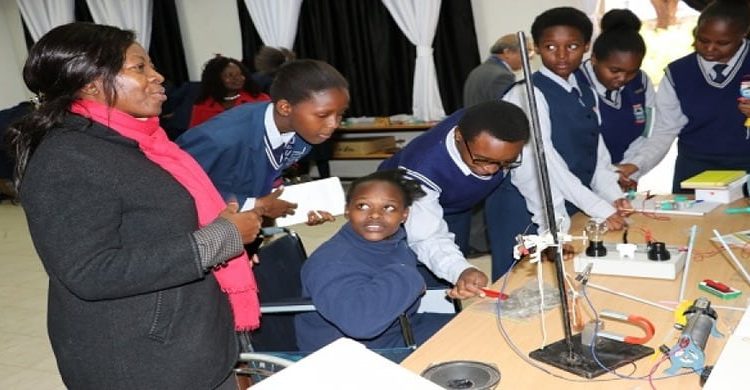Government Set to Spend Kes. 5 Billion for JSS Laboratories
The government has given indications to invest a mouth-watering Kes. 5 Billion from the capitation funds towards the establishment of Junior Secondary Schools (JSS).
The investment is a move intended to ensure there is adequate infrastructure and materials for the 1.26 Grade 7 learners who are transitioning within the Competency-Based Curriculum (CBC).
Education Principal Secretary Belio Kipsang reiterated the need for collaboration between education stakeholders to ensure that students are prepared for the challenges they will face in Senior Secondary Schools (SSS).
Kipsang recognized that some parents harbor reservations about the transition but emphasized that it is merely a way of monitoring and assessing student progress.
The Education PS also revealed that the Ministry of Education is working closely with Members of the National Assembly (MPs) to implore them to allocate part of their NG-CDF funds toward the improvement of school infrastructure.
In his view, this collaboration will help to create a more supportive and inclusive learning environment for students across the country.
The Government’s initiative of allocating Kes. 5 billion towards the establishment of JSS laboratories is a crucial step towards ensuring that students in Kenya get an education that is of high quality.
AS Grade 7 learners transition to JSS, some parents elected to escort their children to school while asking out what was required including which type of uniform their children are children to put on.
Despite the notable issues facing JSS, many public schools displayed high levels of preparedness and cooperation from parents who ensured that their children reported to school with the correct school attire.
In the Rift Valley, the 10,093 schools where Grade 7 learners joined in 14 counties region started off smoothly without any hiccups with most schools reporting a high turnout of students.
According to the Rift Valley Regional Director for Education Mr. Jared Obiero, 187 public and 1,242 private schools in the region failed to meet the requirements, and their students were asked to enroll in the nearest schools that had been approved.
He also revealed that some schools had identified unique uniforms and others had allowed their learners to attend in any decent civilian attire.
In Western Region, 579 out of the 3190 schools were barred from hosting Junior Secondary Schools due to not meeting the set hosting criteria.
Some parents complained about the high cost of school uniforms with some schools pricing a pair anywhere between Kes. 25000 and Kes. 3500.
The Director of the Kenya Institute of Curriculum Development (KICD) Professor Charles Ong’ondo oversaw the distribution of CBC books to Grade Seven learners at Kakamega Primary School.
The KICD will distribute 12 books per student with a further two option books to all public schools by the end of this week.
Prof Charles Ongondo called on schools that did not qualify to domicile Junior Secondary Schools to help parents and students to transfer to nearby approved schools within a two-kilometer radius.
In Meru, some students opted to report to school in their old primary school uniforms while others wore civilian clothes.
In Migori, Parents held meetings with schools heads to discuss the new school uniform and other requirements including the KPSEA report, birth certificate, parents’ ID, Bibles, etc.
In Kisii, the County Director of Education received books for Junior Secondary Schools at Kisii Primary School where he said that Kisii Central Sub-County will have 4,488 students joining Junior Secondary.
Nyanza Regional Director of Education Nelson Sifuna expressed his joy after he saw parents and teachers according to the CBC the support they deserved.
Sifuna said that the government would support public schools that did not have adequate facilities including laboratories.
On the hand in Uasin Gishu, some parents complained that they did not have the funds to buy new uniforms for their children even though they had been issued with the specifications.
In Taita Taveta, many Junior Secondary School students have been turned away for not reporting registration fees and learning materials.
It also occurred that some teachers had not been posted to schools in the area, many of which did not have the required infrastructure.
In Bungoma, some schools were ready to receive the first batch of Grade 7 learners while others were still not specific or clear on the requirements including school uniforms.
In Meru, some parents were excited and hopeful about the prospects of their children joining Junior Secondary Schools.



Comments are closed.